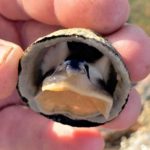Venus clams (Meretrix meretrix), correctly named ‘Asiatic hard clams’, are one of Thailand’s most sought-after clams for food. They occur both in the Gulf of Thailand and on the coasts of the Andaman Sea. Fully grown species are large; their length can exceed 64 mm / 2 ½ ’’. They exhibit significant variations in coloration but are stable in form and proportions. The pallial sinus line inside the shell is always curved inwards. See the following picture.
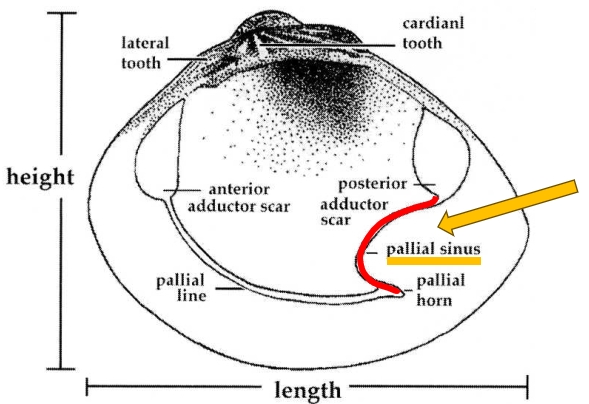
Venus clams prefer long, open coastlines with sandy beaches or sandy beaches with mixed mud. Completely muddy beach bottoms are not to their liking. Usually, they occur in patches on the beaches, which can be found by looking for places with a higher density of dead Venus clam shells than in other areas.
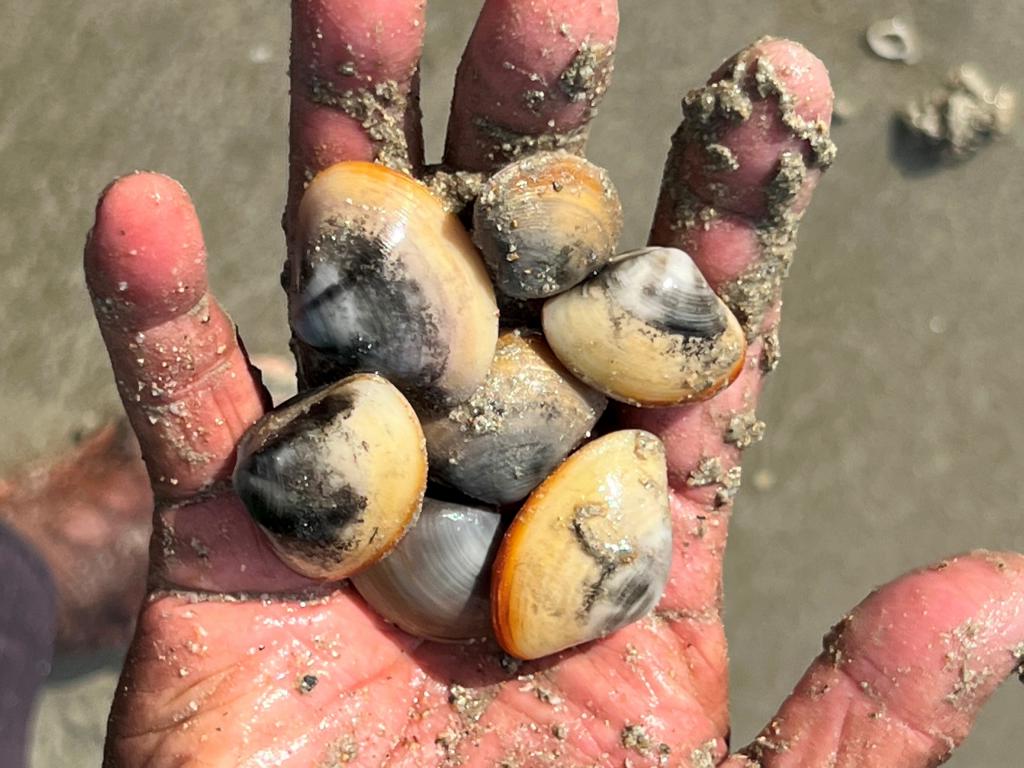
Best time to collect Venus clams by finger probing.
The clams always try to be covered by water. Therefore, they will still be in wet sand at the lowest tide level, roughly 5 cm / 2’’ below the surface.
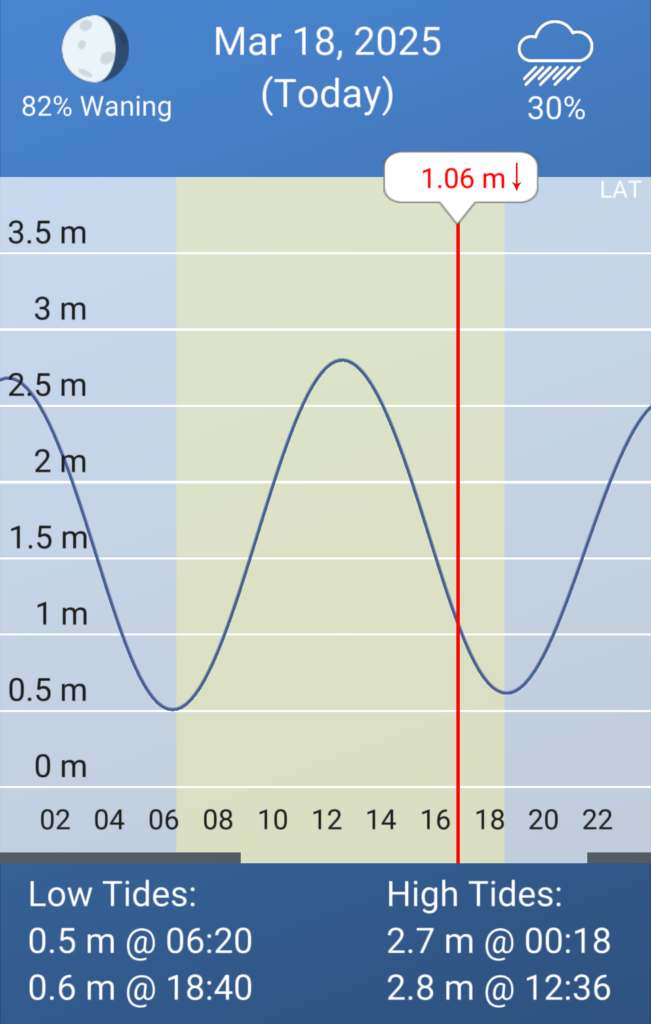
The best time to collect them is from about two hours before the lowest tide level to about one hour thereafter. From about two hours before the lowest tide, a sheet of water slowly retreats from the beach, giving the best opportunity to see the faint marks of these clams on the sandy surface. When the rising tide flows back towards the coast, only a small window of about one hour remains, when traces of the hidden clams can be spotted.
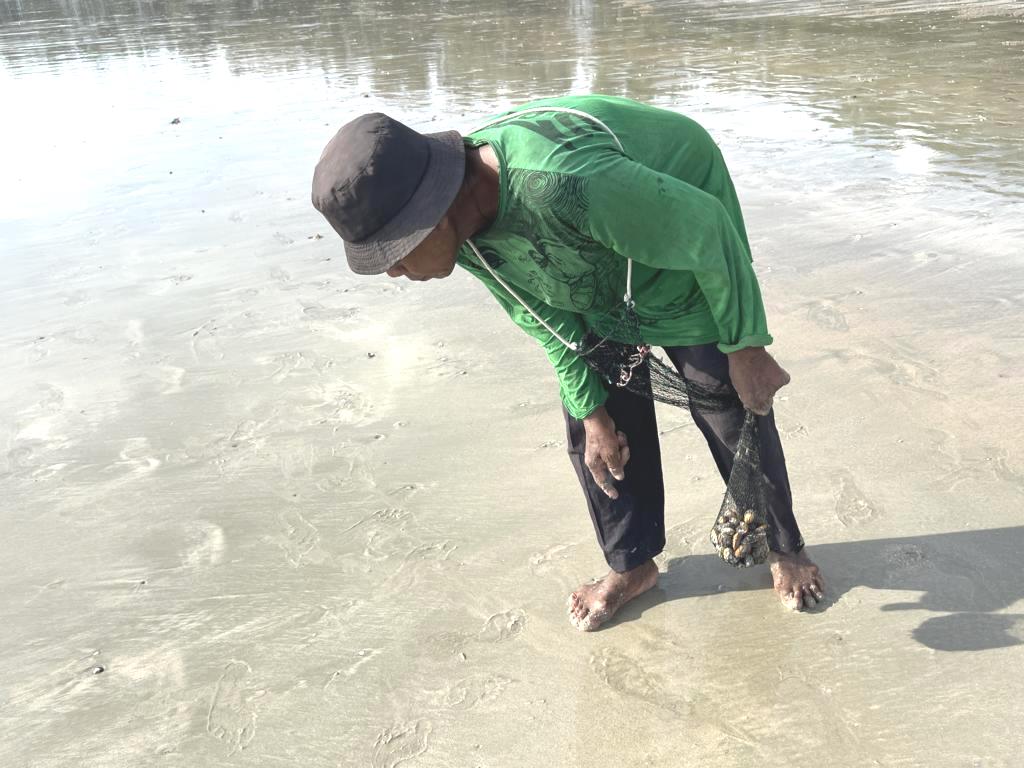
The best collection time depends on the tide tables for each day. Generally, a receding tide is preferable to a rising tide. However, sunrise, sunset, and spring or neap tides must also be considered.
What are the signs of hidden Venus clams on the surface?
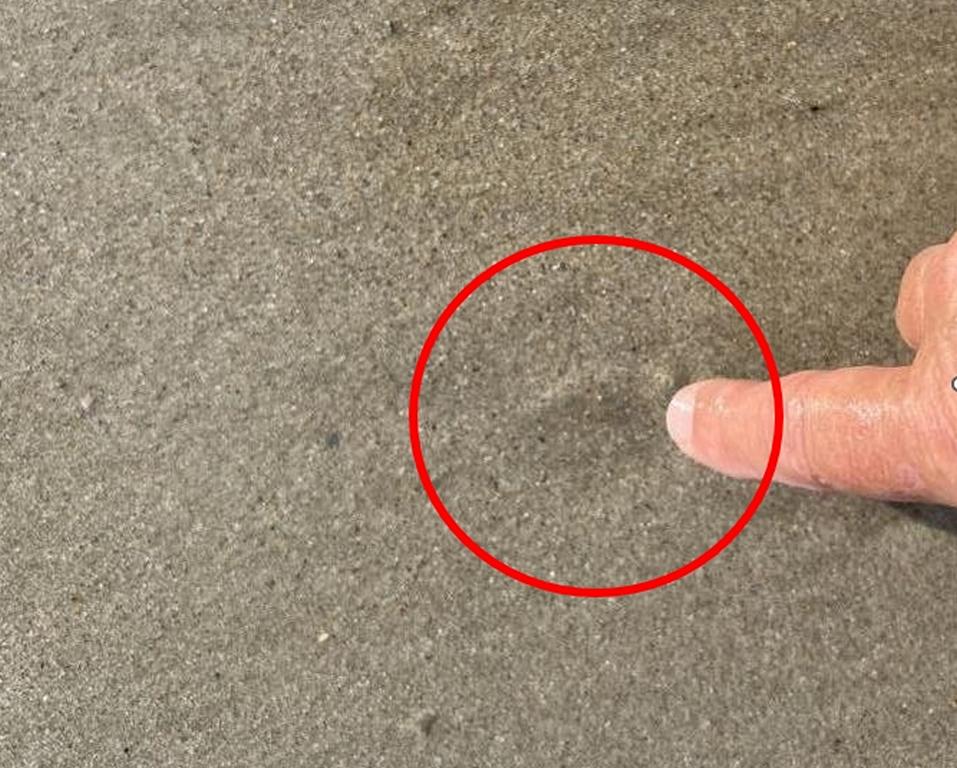
When a slight wave flows back towards the beach at receding tide, you will see a slight disturbance of the sand surface. Only inconspicuous disturbances of the sand surface indicate a Venus clam below. Any visible hole originates not from a clam but from various worm species.
Gathering Venus clams by finger probing.
When a suspicious surface mark of a clam is found, one finger is stuck next to it into the sand. In case a live Venus clam is there, immediately, a siphon hole opens up next to the probing finger.
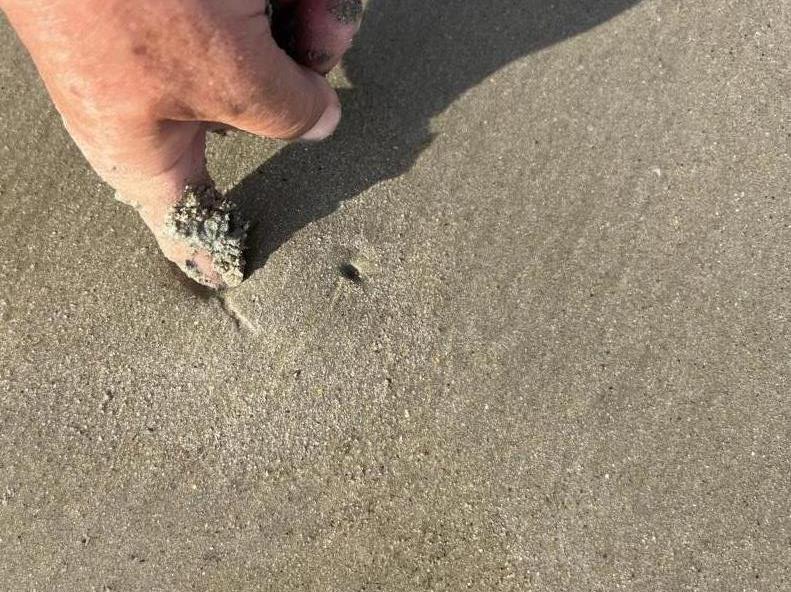
The probing finger will scoop the clam out of the sand toward the siphon hole.
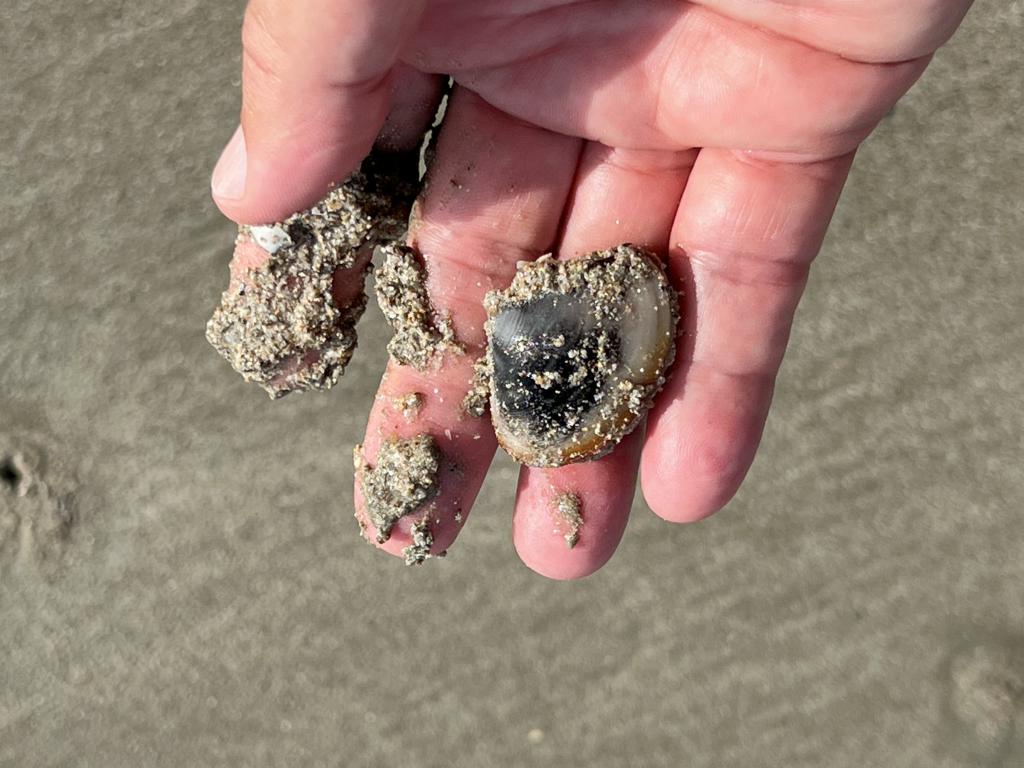
My friendly Thai teacher collected about two kg of Venus clams in two hours. After figuring out how to spot the shell marks on the sand, I collected about 25 shells in half an hour.
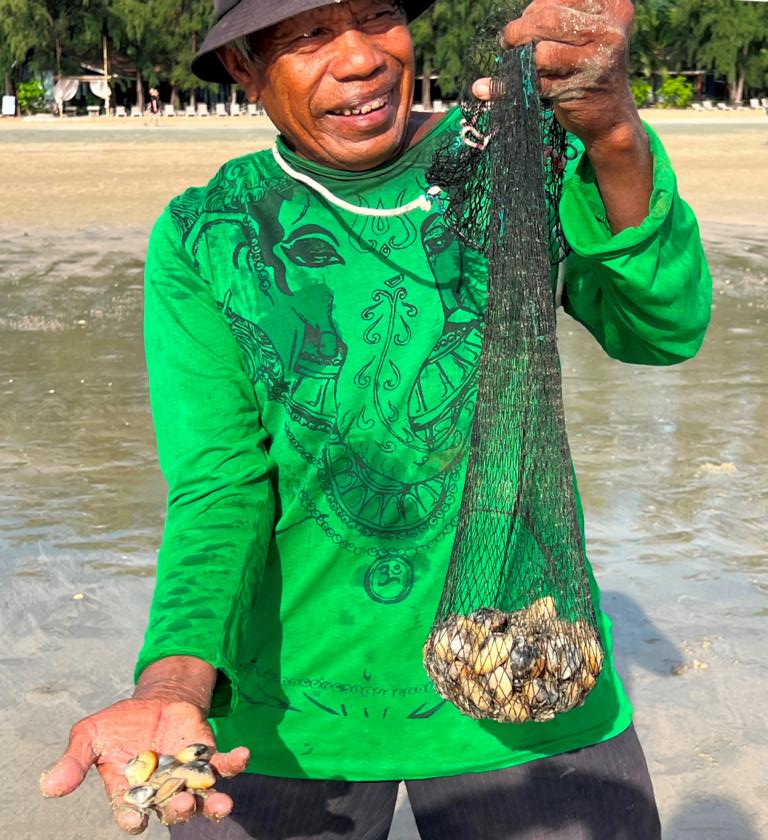
Besides gathering Venus clams by finger probing on shallow beaches, collectors can wade in knee-deep waters at the same beaches and collect these clams, which were exposed by wave action.
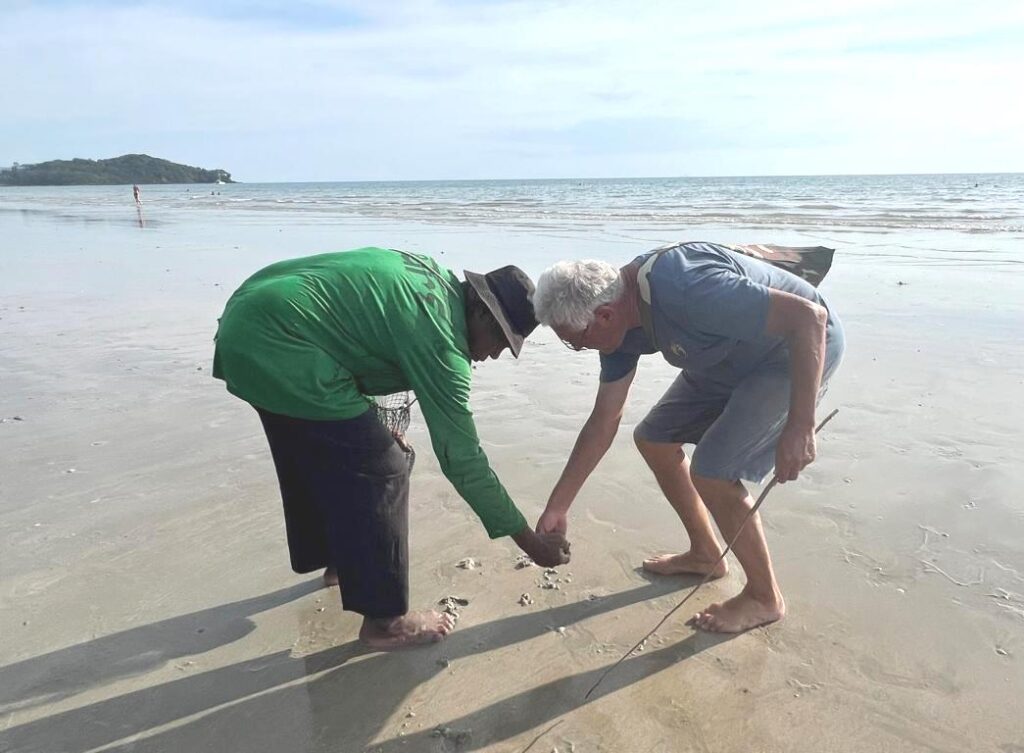
Nutritional value of Venus clams.
According to the US Department of Agriculture (USDA), 100 g of these clams contains abt 26 g of Protein, 2 g of Total fat, and 5 g of Carbohydrates, resulting in 148 kcal / 100 g. Cholesterol, sodium, iron, vitamin B12, and potassium are very high. Detailed figures can be found here.
Lessons learned about Venus clam gathering by finger probing:
- Venus clams are large bivalves with lots of delicious meat.
- It isn’t easy to spot their slight marks on the sand surface.
- When sticking a finger next to a clam into the sand, a siphon hole opens up immediately next to the finger.
- These clams can also be found in knee-deep water, lying on the sand.
Further readings about Bivalves on this website:
An oyster species growing on Mangrove trees
White mussels at the Namibian coastline
Black mussels at the Namibian coastline
Beachcombing for Vongole clams in Northern Italy
Collecting Pipi clams at Rawai Beach
.




